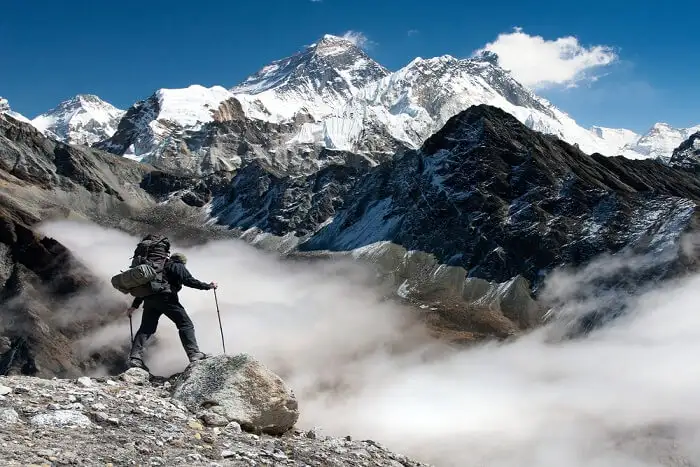Before you plan your trek to Everest base camp, it is important to know what to expect. You should know when to go, what documents you need, and how far the trek is. Additionally, you should be aware of the signs of altitude sickness. Before you leave, you should research the conditions and costs to make sure you don’t end up in a bad situation.
Time of year to trek to Everest Base Camp
There are a number of factors to consider when determining the best time of year to trek to Everest Base Camp. The best months to go to the mountain are April and May, when the weather is more temperate and there’s less snowfall. However, you should be aware of the weather conditions during these months, as they can be cloudy and hot.
If you’re considering trekking to Everest Base Camp, check the weather and climate in Nepal before deciding on a particular month. The monsoon season can lead to heavy rain, cloudy skies, and slippery trails, but despite the high altitude, the temperatures will not be as low as they might appear. Autumn is another good time to go, as it’s not too cold at night.
Summer is one of the busiest months in the Everest region. The weather is mild at lower elevations and cool at higher altitudes, which makes it an excellent time to trek to Everest Base Camp. The views are beautiful and there are fewer crowds. You’ll be surrounded by flowering rhododendrons and colorful prayer flags.
Documents required
In order to hike to Everest Base Camp, you need to acquire a multi-entry visitor visa and a Sagarmatha National Park permit. You can apply for both of these permits through your guide or at immigrations in Kathmandu. Both of these costs approximately US$35 and require the presentation of five passport photos and two copies of your passport.
When you plan to hike to Everest Base Camp, it is important to gather all the necessary documents. First, you will need a trek permit from the Pasang Lhamu Rural Area and an entry permit to the Sagarmatha National Park. You should also bring a camera, power bank, and portable chargers. You should also bring a book to pass the time during the trek.
Moreover, you should bring along some hygiene items. These are necessary since you will not have access to these products along the trail. Toilet paper, toothpaste, and soap are essential. You may also bring shaving cream and razors if you feel the need. It is recommended that you carry enough personal grooming supplies, especially during a long trek, such as trekking to Everest Base Camp. Finally, it is wise to bring a travel insurance plan, which will protect you from unforeseen circumstances.
Distance of trek
The distance of the trek to Everest Base Camp is 130 kilometers. While that might not seem like a lot, you need to keep in mind that you are walking at an average speed of three kilometers per hour and at an altitude of 3000 meters. This means that you will be walking for five to seven hours each day.
There are two main routes to Everest Base Camp: the Everest Base Camp Trek and the Three Passes Trek. While the Everest Base Camp Trek is the most popular route, the Three Passes Trek takes you to Everest Base Camp while the Three Passes Trek takes you over Cho La and Renjo La.
The journey to Everest Base Camp begins in Kathmandu, Nepal. After arriving in Kathmandu, spend some time exploring the city, and then head northeast to start the trek to Everest Base Camp. Most trek itineraries begin at Lukla airport, and most will require you to fly into the city of Lukla.
Signs of altitude sickness
If you’re thinking about hiking to Everest Base Camp, you should be aware of the warning signs of altitude sickness. Although the effects of altitude sickness are relatively mild, they can have serious consequences if left untreated. Common symptoms include a headache, fatigue, difficulty sleeping, and shortness of breath. If you notice any of these signs, you should turn around immediately and seek medical attention.
To avoid altitude sickness, it is important to drink plenty of water. It’s a known fact that humans lose water more quickly at high altitudes, and this can lead to cramps and dehydration. Aim to drink 500 ml of water every half an hour. You should also consume plenty of liquid food. Avoid leaving your stomach empty, and eat plenty of good food.
There are a number of possible causes of altitude sickness. Some people experience symptoms even at lower elevations, which can increase their risk of the disease. However, the primary cause of altitude sickness is fast ascents. You should avoid climbing more than 500m a day in a short amount of time. Additionally, dehydration can worsen the condition.
